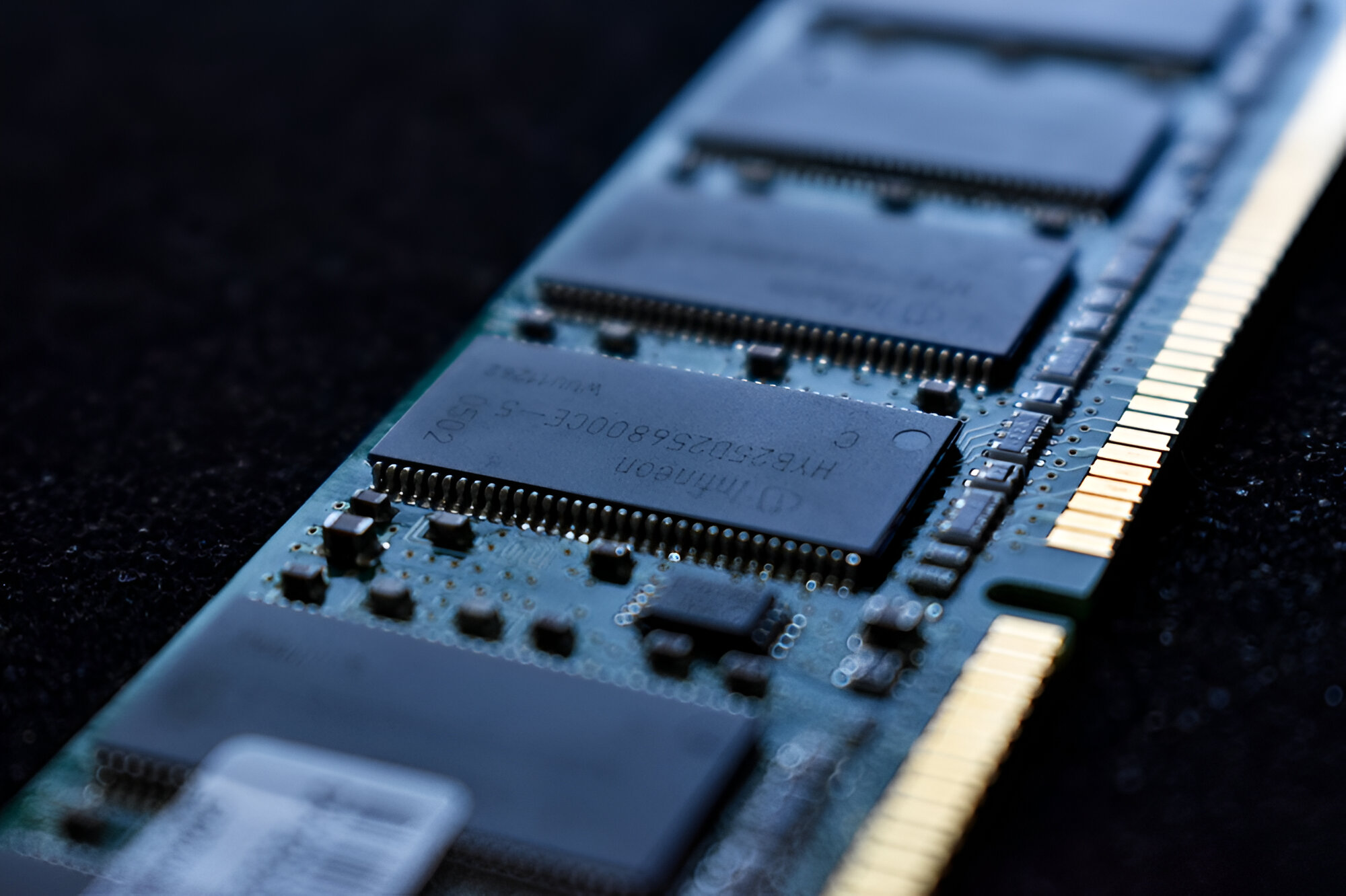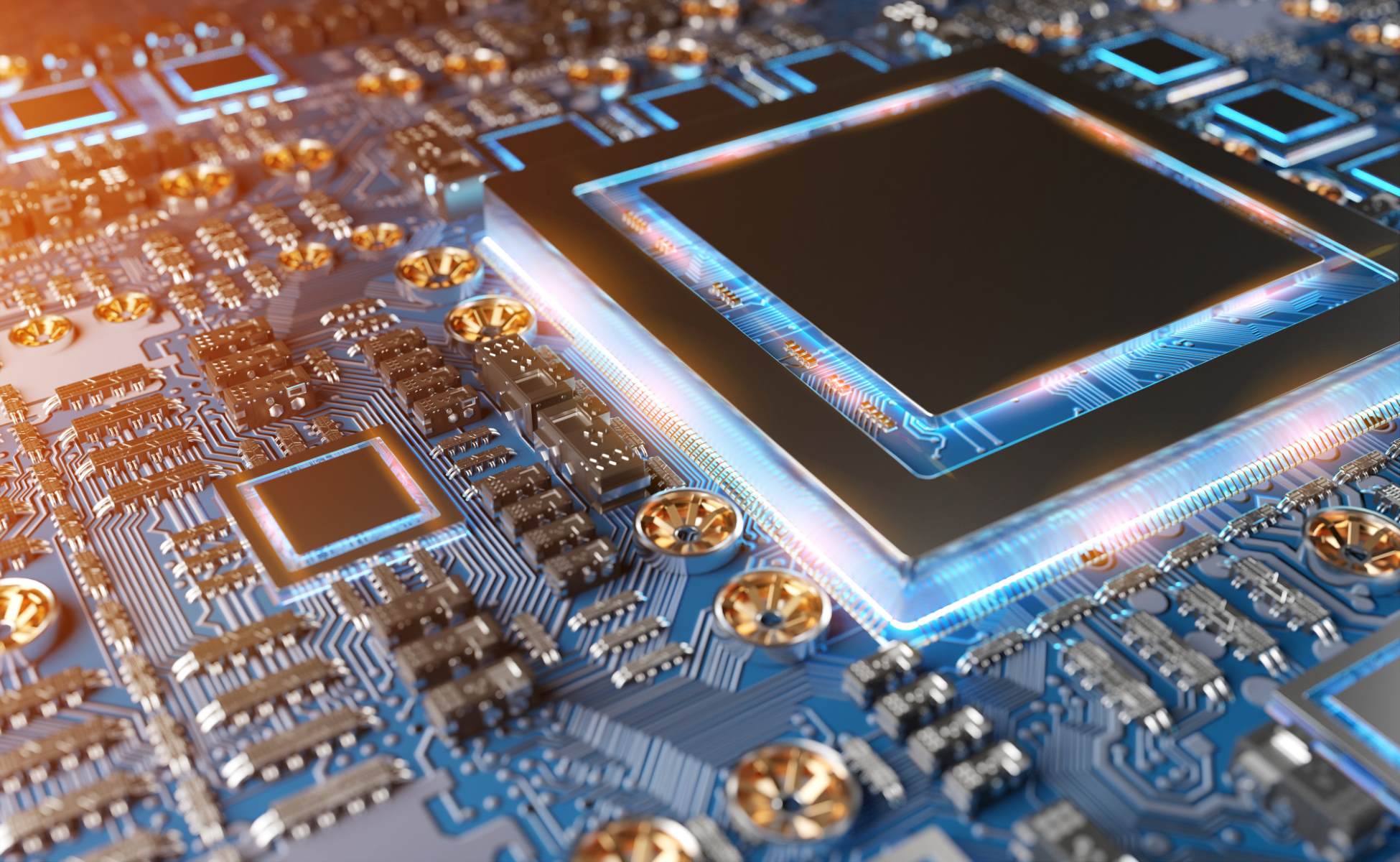Signs of a Failing RAM
Random Access Memory (RAM) is an essential component of any computer system, helping to store and quickly access data for smooth operation. However, like any hardware, RAM can deteriorate over time, leading to performance issues and system crashes. It’s important to be able to recognize the signs of failing RAM so that you can take appropriate measures to address the problem. Here are some common indicators:
- Frequent System Crashes: If you notice your computer unexpectedly crashing or freezing, it could be a sign of bad RAM. When the RAM becomes faulty, it can cause the system to become unstable and crash frequently.
- System Reboots: Another symptom of failing RAM is the computer rebooting itself without any apparent reason. If your system suddenly restarts without any warning, it’s worth investigating the RAM as a possible culprit.
- Blue Screen of Death (BSOD): Seeing the infamous Blue Screen of Death can indicate RAM problems. If you encounter frequent BSOD errors with different error codes, it’s highly likely that the RAM is malfunctioning.
- Programs Not Responding: When RAM starts to fail, it can lead to sluggish performance, causing programs to become unresponsive or take longer to load. If you notice this happening frequently, it could be attributed to faulty RAM.
- Unexpected File Corruption: RAM errors can lead to data corruption, resulting in files becoming corrupted or unusable. If you consistently encounter strange file errors or find that files are getting corrupted, it’s time to investigate the RAM.
- System Hangs or Slowdowns: As RAM degrades, it affects the overall performance of your computer. You may experience system hangs, delays in executing commands, or a noticeable slowdown in system operations.
It’s important to note that these symptoms can also be caused by other factors, such as software issues or other hardware failures. Therefore, it’s recommended to perform a proper diagnosis to confirm if the RAM is indeed the problem. In the following sections, we will explore various methods to test and diagnose your RAM to ensure an accurate assessment.
Common Symptoms of Bad RAM
Having a well-functioning RAM is crucial for the optimal performance of your computer. Identifying the common symptoms of bad RAM is essential in diagnosing and resolving any potential issues. Here are some of the most prevalent signs that may indicate faulty RAM:
- Frequent System Crashes: If your computer crashes frequently and without warning, it could be a sign of bad RAM. Faulty RAM can cause system instability, resulting in sudden crashes and loss of unsaved work.
- System Freezes: When your RAM is failing, you may experience system freezes or unresponsive applications. This can happen when the RAM fails to properly store or retrieve data, causing the system to become unresponsive.
- Blue Screen of Death (BSOD) Errors: Seeing the infamous Blue Screen of Death is often a clear indication of RAM issues. If you encounter frequent BSOD errors with varying error codes, it’s likely that your RAM is malfunctioning.
- Random Restarts: If your computer restarts unexpectedly, it could be a sign of bad RAM. Faulty RAM can cause your system to reboot spontaneously, disrupting your workflow and potentially leading to data loss.
- Programs Not Responding: A common symptom of bad RAM is unresponsive or slow-loading programs. When the RAM is deteriorating, it may struggle to handle the data required by running applications, resulting in software issues or crashes.
- File Corruption: Faulty RAM can also lead to file corruption and data loss. If you notice files becoming corrupted or experiencing errors when accessing them, it could be due to data being improperly written or retrieved from the RAM.
- System Slowness: If your computer is running significantly slower than usual, it may be due to bad RAM. RAM plays a critical role in system speed and responsiveness, and when it’s failing, it can cause overall performance degradation.
It’s worth noting that while these symptoms are commonly associated with bad RAM, they can also be caused by other hardware or software issues. To confirm that RAM is the problem, it’s recommended to perform proper diagnostic tests using specialized tools or methods, which we will explore in the following sections.
Pressure Test Your RAM
When suspecting that your RAM might be going bad, it’s essential to perform a pressure test to evaluate its stability and reliability. This test will help you determine if the RAM is indeed the source of the issues you’re experiencing. Here’s how you can pressure test your RAM:
- Memtest86: One popular tool for testing RAM stability is Memtest86. It’s a free and widely used program that thoroughly checks your RAM for errors. You can create a bootable USB drive or CD/DVD with Memtest86, restart your computer, and let it run for several hours. The tool will perform extensive tests on the RAM, highlighting any errors or issues it detects.
- Windows Memory Diagnostic: If you’re using Windows, you can utilize the built-in Windows Memory Diagnostic tool. To access it, open the Start menu, type “Windows Memory Diagnostic,” and select the corresponding entry. Choose one of the available options, such as restarting the computer and checking for memory problems. The tool will then perform a scan on your RAM and inform you of any detected errors.
- Test Each RAM Stick Individually: If you have multiple RAM sticks installed, it’s important to test each one individually. Remove all but one RAM stick from your computer and boot it up. Run the Memtest86 or Windows Memory Diagnostic tests on this single RAM stick. If no errors are detected, repeat the process with the other RAM sticks. Testing each stick separately will help you identify if any specific RAM module is faulty.
- Reseat the RAM: Sometimes, a loose connection between the RAM and the motherboard can cause issues. To ensure a secure connection, turn off your computer, unplug it, and open the case. Carefully remove the RAM sticks and reinsert them, ensuring that they are properly seated in the slots. Close the case, reconnect power, and boot up your computer. This simple reseating process can sometimes resolve minor RAM-related issues.
- Consult a Professional: If you’re uncertain about pressure testing your RAM or suspect that there may be other underlying hardware problems, it’s advisable to seek the assistance of a professional technician. They will have the necessary expertise and tools to diagnose and fix any issues with your RAM or other components effectively.
Performing a pressure test on your RAM will help you identify potential errors or faults that may be causing system instability or performance issues. By following these methods and utilizing appropriate diagnostic tools, you can determine if your RAM is indeed faulty and take appropriate steps to address the problem.
RAM Diagnostic Tools
When dealing with potential RAM issues, having the right diagnostic tools can make the troubleshooting process much smoother and more accurate. Here are some commonly used RAM diagnostic tools to help you evaluate the health of your system’s memory:
- Memtest86: Memtest86 is a widely trusted and popular RAM diagnostic tool. It runs outside of your operating system, allowing for a thorough and isolated test of your RAM. You can create a bootable USB or CD/DVD with Memtest86 and then restart your computer to boot into the testing environment. The tool performs various tests to identify any errors or issues with your RAM.
- Windows Memory Diagnostic: If you’re using a Windows operating system, you can utilize the built-in Windows Memory Diagnostic tool. Access it by opening the Start menu, typing “Windows Memory Diagnostic,” and selecting the corresponding entry. The tool allows you to choose between restarting your computer immediately or scheduling the test for the next restart. It performs a comprehensive scan of your RAM and reports any detected problems.
- MemTest for Windows: MemTest for Windows is another powerful RAM diagnostic tool that runs within your operating system. It performs extensive tests to check for potential errors and issues with your RAM. MemTest for Windows offers convenient features like adjustable test parameters, individual and continuous testing, and the ability to test specific ranges or capacity of RAM modules.
- PassMark MemTest86: PassMark MemTest86 is a commercial RAM testing tool that provides advanced features and capabilities. It thoroughly tests your RAM for errors, including issues such as intermittent failures and errors caused by electrical interference. PassMark MemTest86 offers a user-friendly interface, extensive configuration options, and comprehensive diagnostic reports.
- HCI MemTest: HCI MemTest is a specialized RAM diagnostic tool that focuses on detecting memory errors that can occur under extreme stress conditions. It is often used for testing RAM overclocking stability. HCI MemTest applies a high memory load to your system, simulating intense usage scenarios to identify potential errors and instabilities in the RAM.
Using these RAM diagnostic tools, you can obtain valuable insights into the health and stability of your system’s memory. Remember to follow the provided instructions for each tool and let the tests run for an adequate duration to ensure accurate results. It’s recommended to use multiple diagnostic tools to cross-reference the results and obtain a comprehensive evaluation of your RAM’s condition.
How to Manually Test Your RAM
Aside from using dedicated RAM diagnostic tools, you can also manually test your RAM to identify any potential issues. Although this method requires a bit more effort, it can be helpful in certain situations. Here’s a step-by-step guide on how to manually test your RAM:
- Power Off Your Computer: First, ensure that your computer is completely powered off. This will prevent any data loss or potential damage to your system during the testing process.
- Locate and Remove RAM Modules: Open your computer case and locate the RAM modules. Carefully remove them by pressing down on the clips on either side of the modules and gently pulling them upward.
- Clean the RAM Slots: Use a can of compressed air or a soft brush to clean any dust or debris from the RAM slots. This will help ensure a proper connection when you reinsert the RAM modules later.
- Place a Single RAM Module: Insert one RAM module back into its respective slot. Ensure that it is properly aligned with the slot and firmly seated. Press down on the top edges of the module until you hear a click, indicating that it is securely installed.
- Power On Your Computer and Monitor: With a single RAM module in place, turn on your computer and monitor to proceed with the testing process.
- Perform System Stress Test: Once your computer has booted up, open several intensive programs or run a stress test application to put a heavy load on the system. This will help identify any instability or issues with the RAM.
- Observe for Errors or Instability: Keep a close eye on your computer’s performance. Look for any system crashes, freezes, or errors that occur while it is under stress. This could indicate a problem with the RAM module you are testing.
- Repeat the Process: If the first RAM module passes the stress test without any issues, power off your computer and swap it out for another RAM module. Repeat the same steps for each RAM module you have individually until you have tested all of them.
- Analyze the Results: After you have tested all your RAM modules individually, you can analyze the test results. If you encounter errors or instability with a specific module, it is likely that module is faulty and needs to be replaced.
Note that manually testing your RAM can be time-consuming, especially if you have multiple RAM modules. However, it can provide you with a hands-on approach to identify any faulty modules that may be causing issues with your system. If you are unsure about performing manual RAM tests or suspect underlying hardware problems, it’s always recommended to seek professional assistance to avoid any accidental damage to your computer.
What to Do When You Suspect Bad RAM
If you suspect that your RAM is causing issues with your computer’s performance, it’s important to take appropriate steps to diagnose and address the problem. Here’s what you can do when you suspect bad RAM:
- Perform Diagnostic Tests: Start by using RAM diagnostic tools, such as Memtest86 or Windows Memory Diagnostic, to thoroughly test your RAM. These tools will help identify any errors or issues with your RAM that may be causing system instability.
- Check for Loose Connections: Ensure that the RAM modules are securely and properly seated in their slots. Sometimes, a loose connection can lead to performance issues. Power off your computer, open the case, and reinsert the RAM modules, ensuring they are firmly in place.
- Try Different RAM Slots: If you have multiple RAM slots on your motherboard, try moving the RAM modules to different slots. This can help determine if a particular slot is causing the problems, rather than the RAM module itself.
- Remove and Reinsert RAM: If you have more than one RAM module installed, try removing one at a time and booting up your computer with the remaining module. This can help identify if a specific RAM module is causing the issues.
- Update Your BIOS: Outdated BIOS firmware can sometimes cause compatibility issues with your RAM. Visit your motherboard manufacturer’s website and check for any available BIOS updates. Follow their instructions to update your BIOS firmware.
- Replace Faulty RAM: If you have determined that your RAM is indeed the problem, it’s time to replace the faulty module. Contact the manufacturer or retailer from whom you purchased the RAM to inquire about their warranty or return policy. Obtain a replacement and install it following the manufacturer’s instructions.
- Seek Professional Help: If you are unsure or uncomfortable with performing the diagnostics or replacing the RAM module yourself, it’s advisable to seek help from a professional technician. They will have the necessary tools and expertise to diagnose and resolve any RAM-related issues.
- Keep Your RAM Cool: Overheating can cause RAM issues, so make sure your computer has adequate cooling. Ensure that all fans are functioning properly, clean out any dust or debris that may be obstructing airflow, and consider adding additional cooling solutions if necessary.
- Consider Upgrading Your RAM: If your computer is still experiencing performance issues even after replacing faulty RAM, it may be worth considering upgrading your RAM to a higher capacity or faster speed. This can help improve overall system performance and responsiveness.
Remember, it’s crucial to diagnose and resolve any RAM issues promptly to ensure the smooth operation of your computer. Following these steps will help you identify and address bad RAM, leading to improved system stability and performance.
Protecting and Maintaining Your RAM
RAM is a vital component of your computer system, and taking steps to protect and maintain it can help ensure its longevity and optimal performance. Here are some essential tips for protecting and maintaining your RAM:
- Handle with Care: When handling RAM modules, ensure that you do so with caution. Avoid touching the gold contacts on the module to prevent static electricity discharge, which can potentially damage the RAM.
- Keep it Clean: Dust can accumulate on the RAM modules and motherboard over time, potentially affecting their performance. Regularly clean the inside of your computer case with compressed air or a soft brush, paying attention to the RAM slots and modules.
- Avoid Overclocking: Overclocking your RAM can provide a performance boost, but it also puts extra strain on the modules. Continuous operation at higher frequencies may decrease the lifespan of your RAM. Stick to the manufacturer’s recommended specifications to maintain stability and longevity.
- Provide Adequate Power: Insufficient power supply can cause stability issues with your RAM and other components. Ensure that your power supply is capable of providing enough power to meet the demands of your system, especially if you have multiple RAM modules and other power-hungry components.
- Control Ambient Temperature: High temperatures can negatively impact the performance and lifespan of your RAM. Ensure proper airflow within your computer case, keep it in a well-ventilated area, and consider additional cooling solutions to maintain the temperature within acceptable limits.
- Run Regular System Maintenance: Conducting routine system maintenance practices can help keep your RAM and overall system performance in check. Regularly update your operating system, drivers, and software to ensure compatibility and stability.
- Protect Against Power Surges: Power surges can be detrimental to your RAM and other components. Invest in a reliable surge protector or uninterruptible power supply (UPS) to safeguard your computer system from sudden power spikes or outages.
- Scan for Malware: Malware and viruses can cause various performance issues, including affecting your RAM’s operation. Use reputable antivirus software and perform regular scans to detect and remove any malicious threats.
- Upgrade with Caution: When upgrading your RAM or other computer components, ensure compatibility with your system’s specifications. Refer to the manufacturer’s guidelines and consult technical resources to make informed upgrade decisions.
- Backup Your Data: Regularly back up your important data to safeguard against any potential data loss that may occur due to RAM or other hardware failures. This ensures that even if there are issues with your RAM, your valuable data remains safe and accessible.
By following these tips, you can protect and maintain your RAM, prolonging its lifespan and ensuring the smooth and reliable operation of your computer system.

























